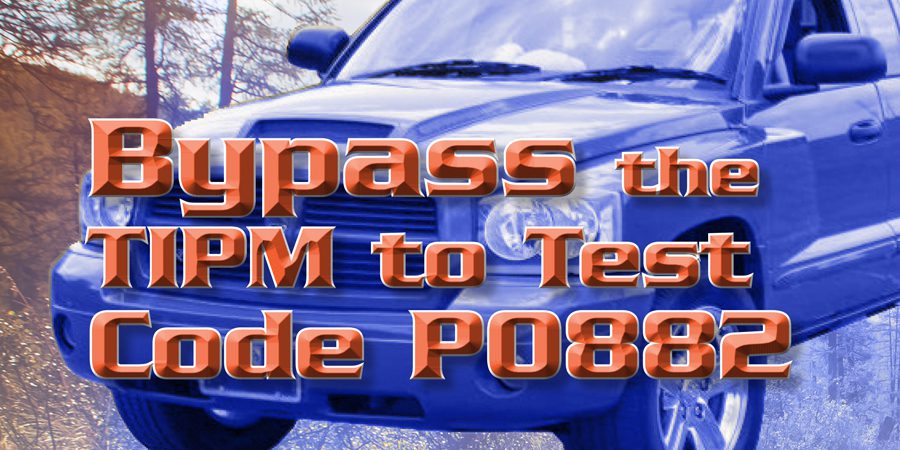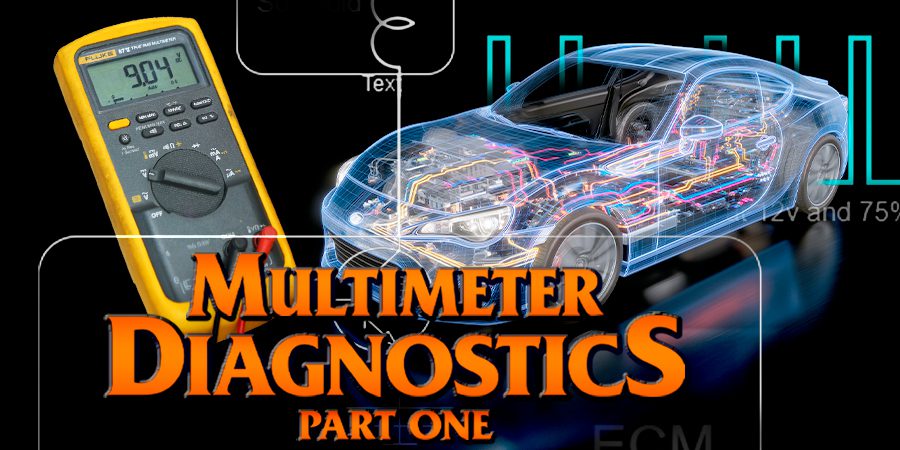There have been numerous changes over the years with GM transmissions, including the 10-speed applications. Many changes are known as running changes, which simply means that the update is inserted into production during the model year at a specific Julian date. Some changes occur at the start of production (SOP) for a new model year. Many updates include enough component changes that a new generation for that application was introduced. In my example, the 10-speed GM applications are now being produced as generation 3 units for many applications, which means there has been a “lot of water under the bridge” since the unit was originally introduced.
Every dealer, as well as most transmission shops in the country, has had GM vehicles that appeared at their door with a P0747 DTC set and a customer complaint related to how the transmission was operating. P0747 is a DTC that we have seen on FWD as well as on RWD applications. Regarding GM applications, the issue can arise on 8,9, and 10 speed applications as the diagnostic indicates that a problem exists with the “transmission pressure control solenoid one being stuck on”. According to the diagnostics from GM, it appears that the P0747 code can only be set by mechanical or hydraulic-related issues. While I have never seen the DTC set on a 10-speed due to electrical problems, I have certainly seen it on the GM FWD/ AWD 8/9 speeds in SUV applications, which have the same DTC and set the code using the same criteria. Those applications had ignition accessory wakeup signal issues with the BCM that were causing problems resulting in a P0747.
We are seeing a lot of P0747 on the 10-speeds, so let’s take a look at some information related to the DTC. First and foremost, this issue can be a serious one that may lead to wheel lockup or clutch tie-up concerns, as too many clutches can be applied, typically during a forced downshift. However, we have also observed the issue when no shifts were being commanded. The concern is usually intermittent and may only occur at specific transmission temperatures. GM has issued campaigns N242480630 and N242454440 (recalls) that update the TCM software for this issue and extend the transmission warranty to 10 years or 150,000 miles, aiming to restore customer confidence. In addition, GM placed a “Stop Sale’ order for all vehicles with those transmissions.
 The software update did not address the root cause of the issue, but instead it forces the transmission into limp mode (5th gear) and turns on the SES light, which may be what you see now as a symptom when the vehicle arrives at your shop. In addition, GM has now released its first hard part change for the field, an update to the “feed limit low” valve, valve spring, and spacer plate, aimed at fully addressing the issue (Figure 1). The updated spacer plates have some balance passages with different sizes as compared to the previous plates. We have known for quite some time what the issues were, but it has taken a long time to get the parts developed, tested, and approved for sale from GM, as well as the aftermarket companies that are providing a solution for this concern.
The software update did not address the root cause of the issue, but instead it forces the transmission into limp mode (5th gear) and turns on the SES light, which may be what you see now as a symptom when the vehicle arrives at your shop. In addition, GM has now released its first hard part change for the field, an update to the “feed limit low” valve, valve spring, and spacer plate, aimed at fully addressing the issue (Figure 1). The updated spacer plates have some balance passages with different sizes as compared to the previous plates. We have known for quite some time what the issues were, but it has taken a long time to get the parts developed, tested, and approved for sale from GM, as well as the aftermarket companies that are providing a solution for this concern.
P0747 may be caused by issues other than the feed limit valve train components I mentioned above, such as:
- 1-2-3-4-5-6-R Clutch regulator valve sticking
- A faulty or sticking clutch solenoid
- Clutch burned (locked up)
- Cross leaks within the valve body, shaft seals, or gaskets
To set a P0747, the TCM monitors for the following:
- System battery voltage is normal.
- No solenoid driver faults or solenoid electrical faults exist.
- No speed sensor faults are present.
- No engine sensor faults present
- Monitors the clutch slip speed ratio calculation (torque) of the off going clutch during a shift.
- If the slip speed calculation indicates that torque is still being transmitted to the clutch when it is being turned off, while the solenoid is commanded to the correct position, the clutch is deemed not to be releasing.
OR
- System battery voltage is normal.
- No solenoid driver faults or solenoid electrical faults exist.
- No speed sensor faults are present.
- No engine sensor faults present.
- The vehicle is being operated in a specific gear at steady throttle, which activates the PCM/TCM “startle mitigation” programming that monitors for “unintended deceleration during steady engine load” when no shifts are being commanded.
- If the “startle mitigation program” deems that a clutch is applying when it should not be during steady throttle, an issue with the clutch is determined to be present.
The 10L1000 is the first of the 10 speeds for which GM released the updated parts, and it consists of the following part numbers:
- 24279142 feed limit low valve spring. This spring is longer and has higher pressure compared to those used previously. Two different design springs were used in these applications previously: straight-cut and hourglass-shaped. This part fits 2021 and later with RPO MGM, MGU, or MKM 10L1000s.
- 24059372 feed limit low valve. This valve is steel rather than the aluminum used previously. This fits 2021 and later with RPO MGM, MGU, or MKM 10L1000’s
- 24047335 Spacer plate. This plate fits the 2024 model year, RPO MGM, MGU, or MKM 10L1000s.
- 24044188 Spacer plate. This plate fits the 2021-2024 model year, RPO MGM MGU 10L1000s.
- These updates DO NOT require that the adaptations be relearned.
- As with any parts you choose (GM or Aftermarket), you should always consider replacing the check balls when performing this repair.
 GM has not released the updated parts for the smaller 10L series units, but it should not be long before you see the new design parts for those applications.
GM has not released the updated parts for the smaller 10L series units, but it should not be long before you see the new design parts for those applications.
The aftermarket also has parts that have just been released to address the issue. Some of the other aftermarket kits include both the feed limit low and the feed limit high valve. Other manufacturers use a drop-in sleeve and anodized aluminum valve. GM uses a steel valve (Figure 2), which doesn’t address valve body wear issues. Regardless of who you choose, GM or one of the aftermarket solutions, it is something that should be updated, as your liability is too high to ignore the possible ramifications of the issues. Additionally, ensure that the campaign (recall) has been performed on any of the 10 speeds that have the updated programming available.
Until next time, remember: “Enjoy the little things, for one day you may look back and realize they were the big things”.















